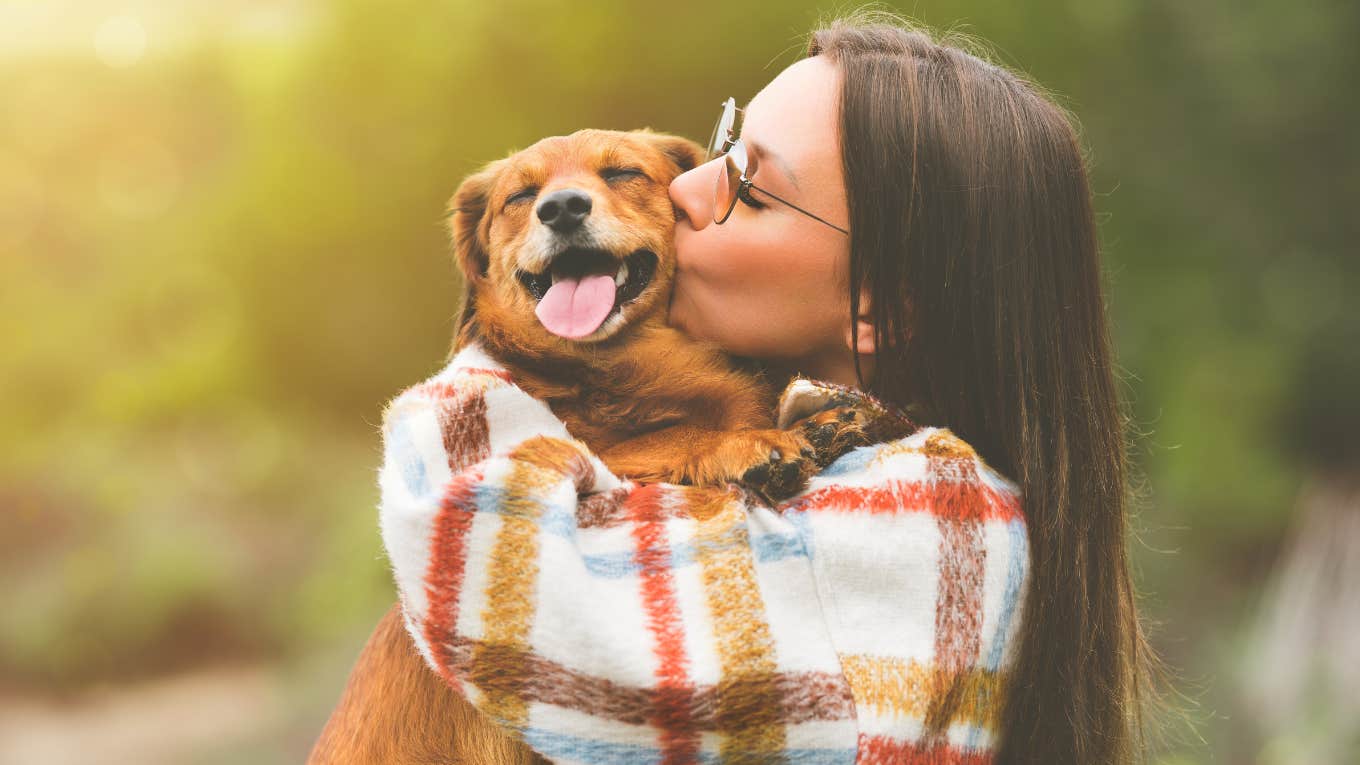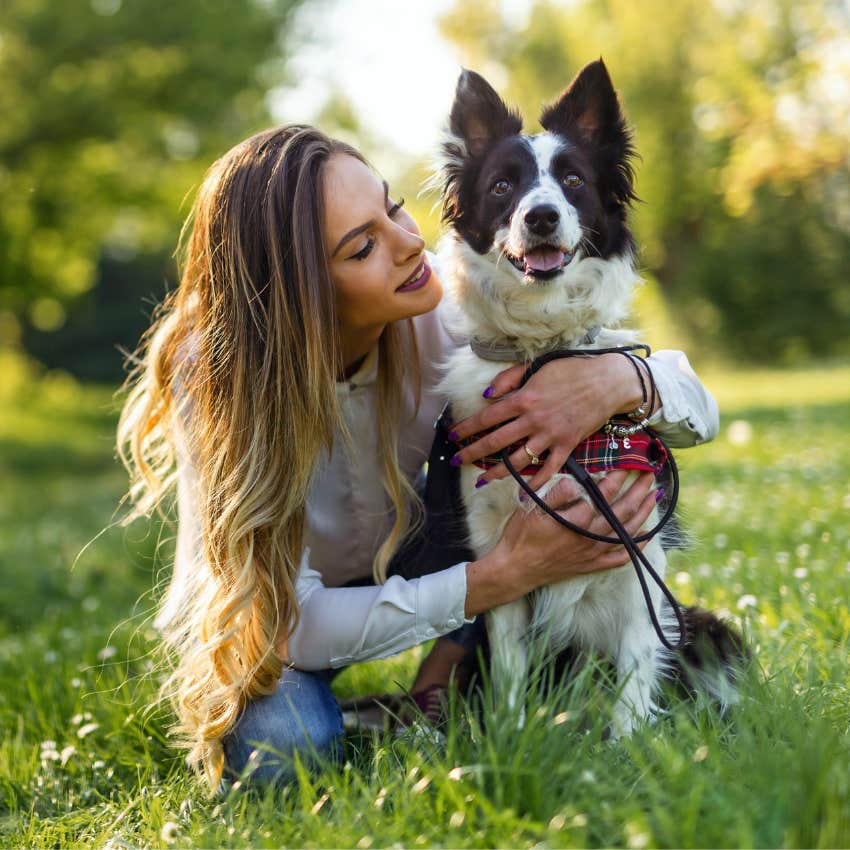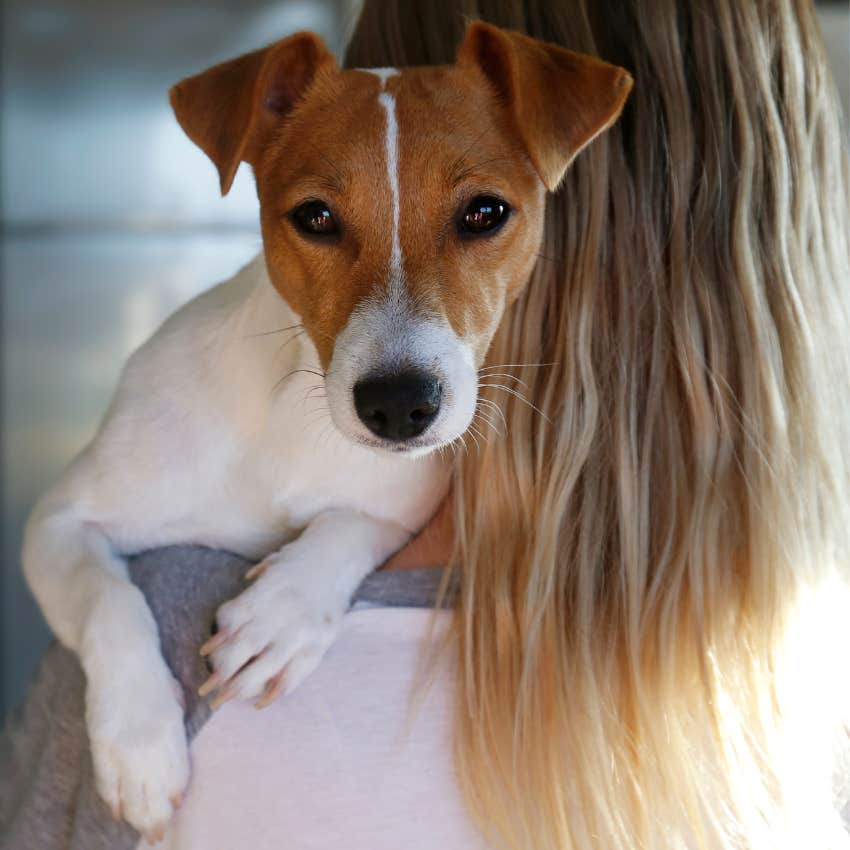Sad New Study Reveals How Dogs Really Feel When You Give Them A Hug
Tragic news for dog-huggers of the world.
 Creative Cat Studio / Shutterstock
Creative Cat Studio / Shutterstock Every dog lover knows just how special their pup is. After all, your dog bestie traveled all the way from their magic dog planet to end up in your arms, ready for a lifetime of snuggles, treats, and walks.
From the way they tilt their heads and wag their tails to the way they cover you in kisses, dogs are masters of expressing their emotions.
While your bond with your furry friend is unbreakable, there’s one display of affection dogs really don’t like.
A sad new study revealed how dogs really feel when you give them a hug.
The research study, published in the journal “Applied Animal Behaviour Science,” is bound to break some dog-loving hearts.
The head scientist of the study, Elizabeth Ann Walsh, from the Cork Pet Behaviour Centre in Ireland, examined videos that featured people hugging, playing with, and petting their dogs in order to analyze how the dogs reacted to their human behavior.
We might love to hug our dogs, but our dogs don’t exactly appreciate the hugs we give them.
Most dogs in the videos examined by Walsh and her team responded to being hugged by expressing indicators of extreme physical stress and anxiety.
68% of dogs avoided eye contact and turned their heads. 44% licked their lips or nose and 43% panted, which are both signs of feeling stressed out.
60% of dogs flattened their eyes while being hugged, and 81% blinked, an action pups make that expresses high stress levels.
 NDAB Creativity / Shutterstock
NDAB Creativity / Shutterstock
The researchers discovered that in 68% of cases studied, the dogs nipped or bit their person as a last resort when they felt unsafe while being hugged.
The study is heartbreaking for dog huggers, yet it’s full of important information on how to care for our pets in the best way possible.
Misinterpreting a dog’s reaction to being hugged can be harmful for both humans and pups alike.
There can be serious consequences to reading your dog’s stress-levels wrong, including “feelings of discomfort, anxiety, fear, distress, and confusion in a dog.”
Walsh explained that ignoring a dog’s discomfort can result in a “fractured dog/human bond,” along with “welfare issues for the dog and the possibility of a dog escalating to exhibit defensive [or] agonistic behavior should communication fail.”
She believed there were “many causes for concern as humans tend not to necessarily understand the body language or vocalizations exhibited by dogs when interacting with them."
A dog’s way of communicating is different from ours, yet like us, they do so to foster a bond and avoid overt displays of aggression.
Canine communication tactics include the use of all their furry little body parts, including their ears, paws, face, muzzle, teeth and coat.
 evrymmnt / Shutterstock
evrymmnt / Shutterstock
Walsh and her team used the study’s results to “advocate for increased education for both adults and children in canine communication, context and in co-operative ways of respecting agency in human-dog interactions.”
As responsible pet parents, we need to account for how our dogs feel. Just because we love to give them hugs doesn’t mean that they like it.
We tend to treat our canine companions like they’re members of our family, yet we shouldn’t forget that, above all else, they’re animals, not miniature people covered in fluff, and deserve to be treated in a way that works for them.
Alexandra Blogier is a writer on YourTango's news and entertainment team. She covers social issues, pop culture, and all things to do with the entertainment industry.

